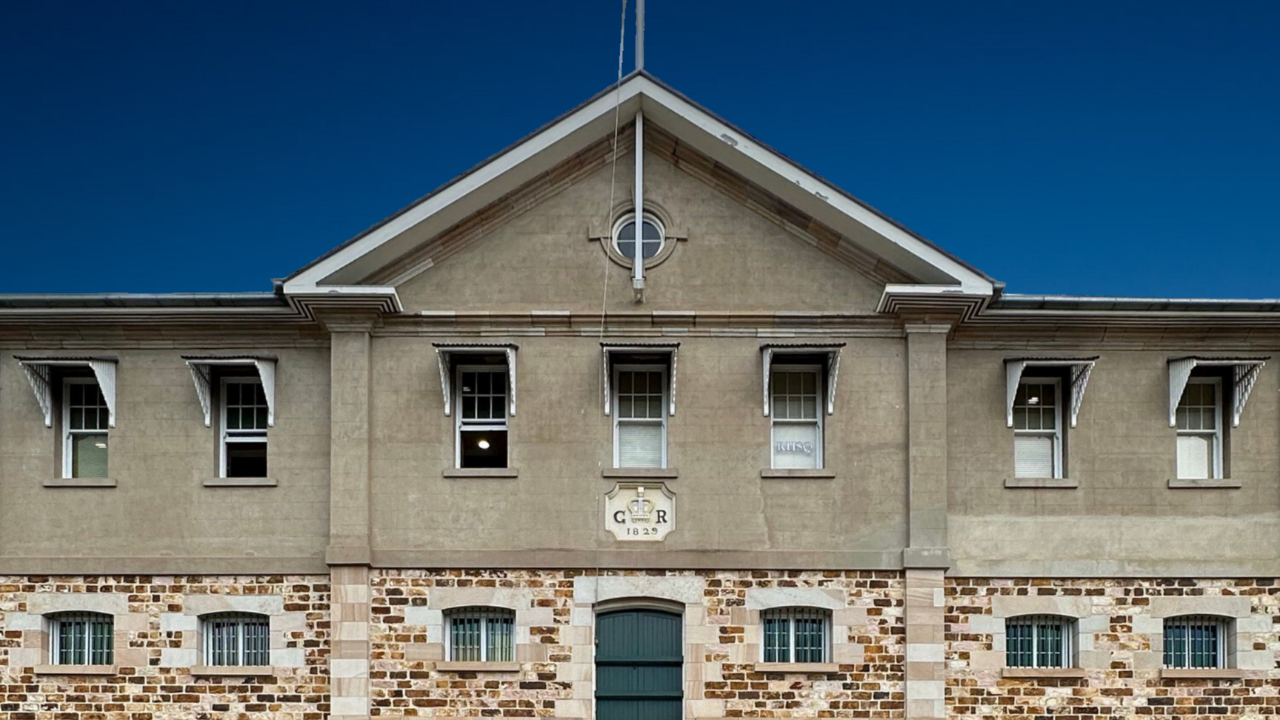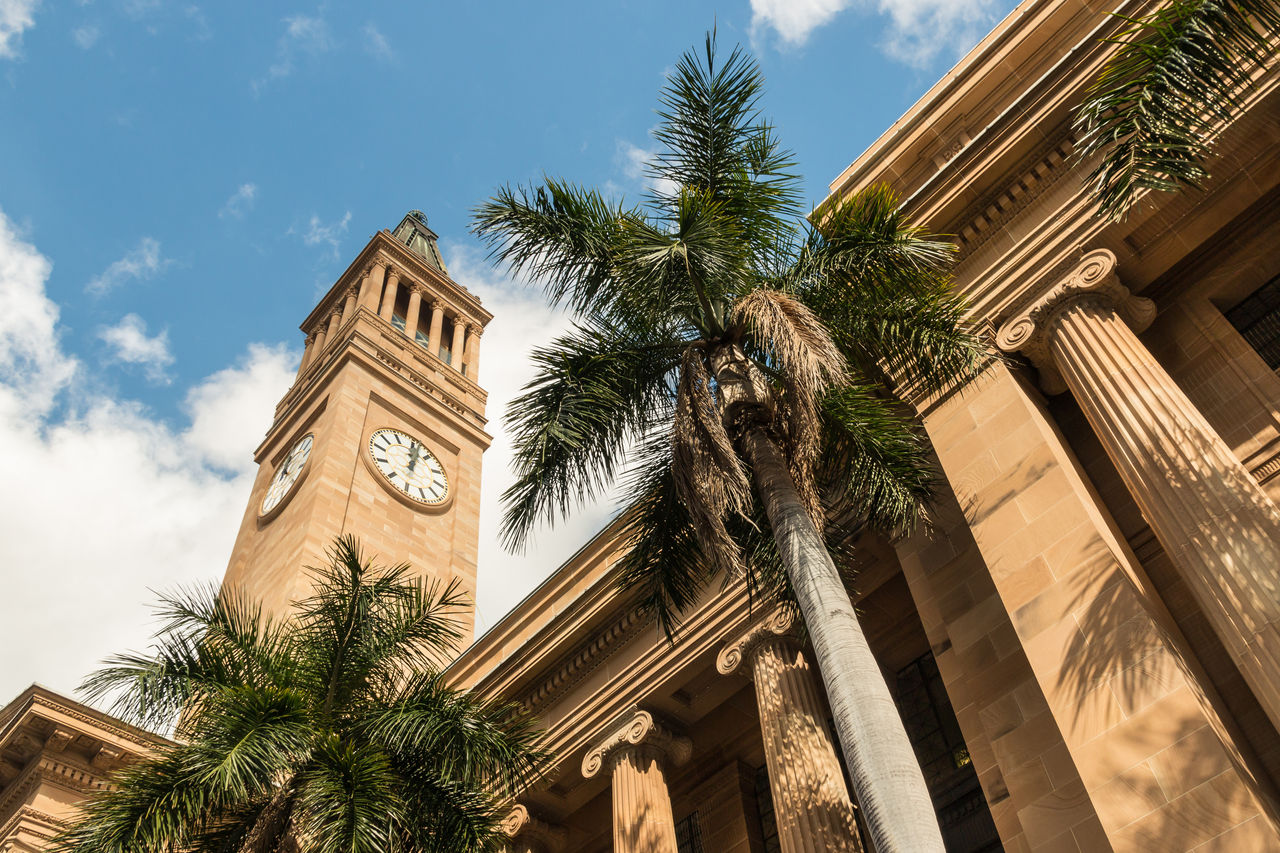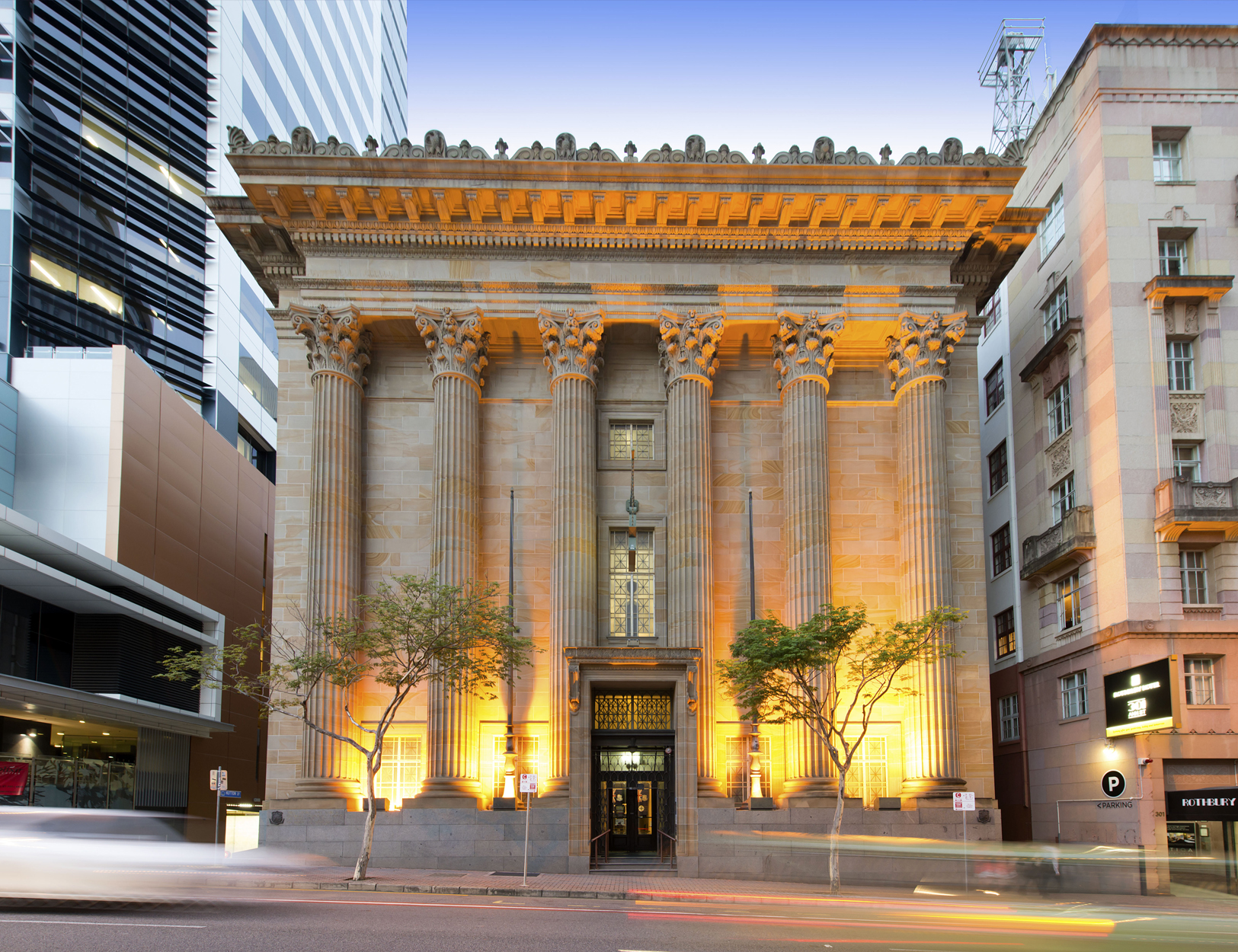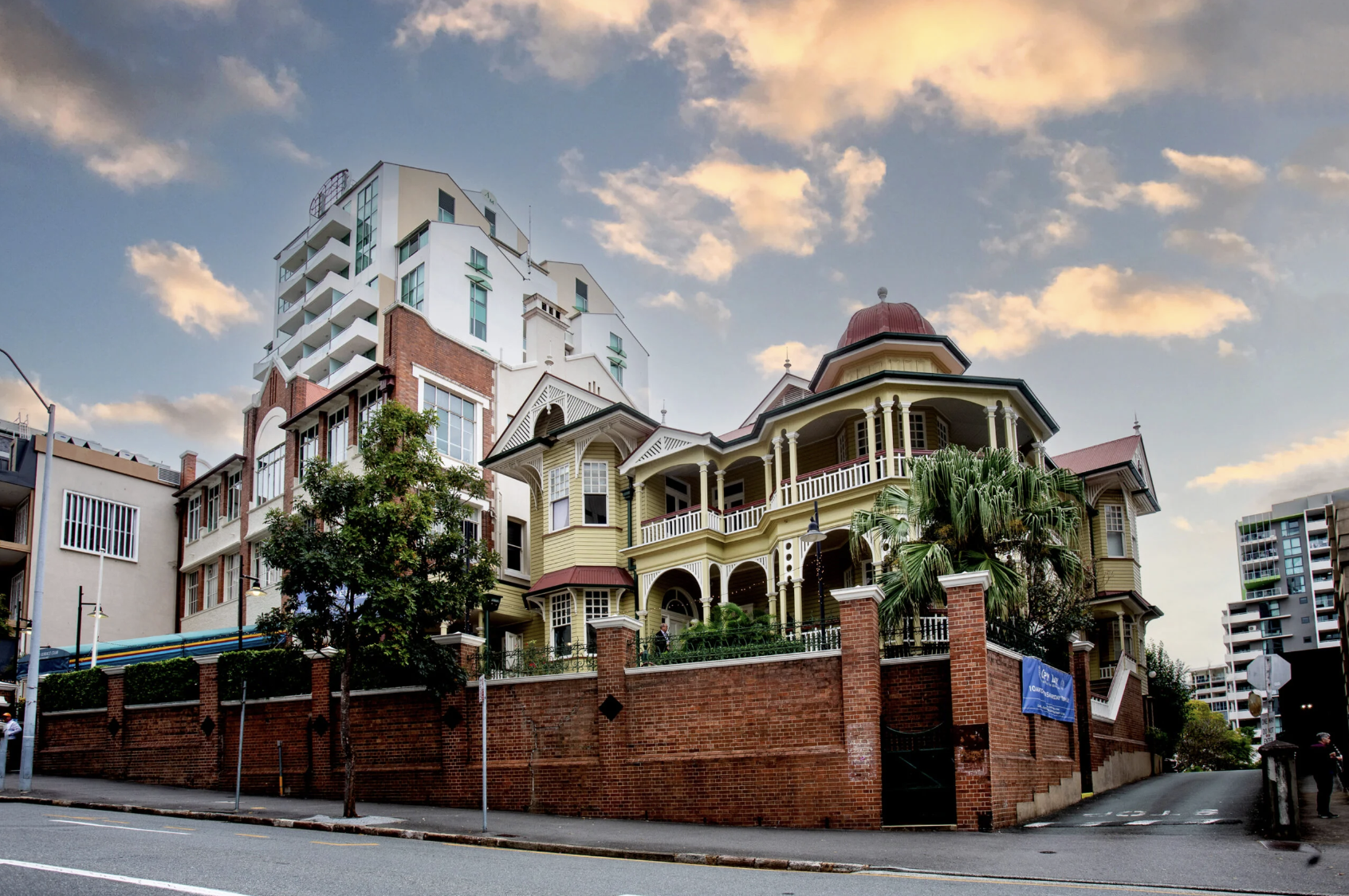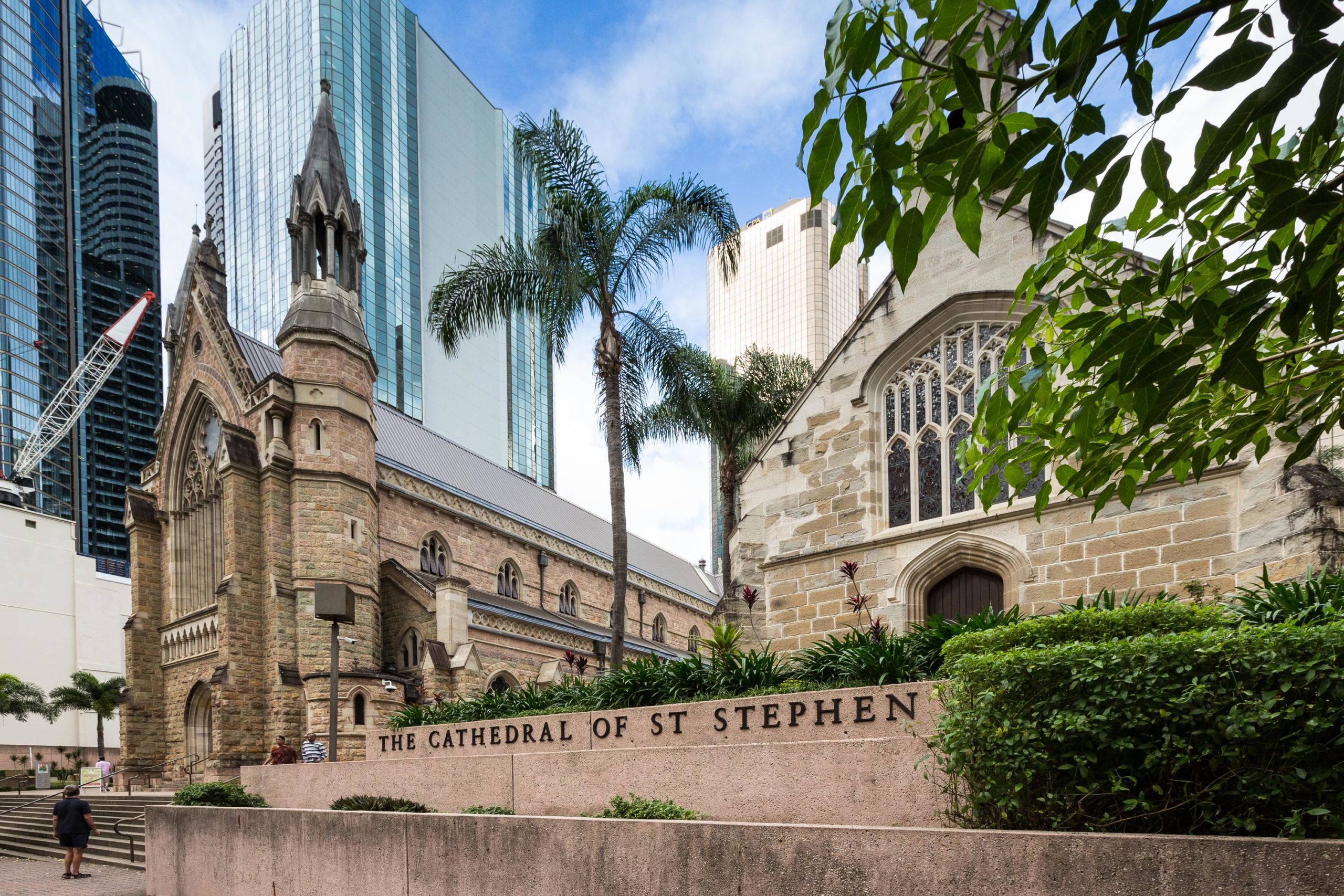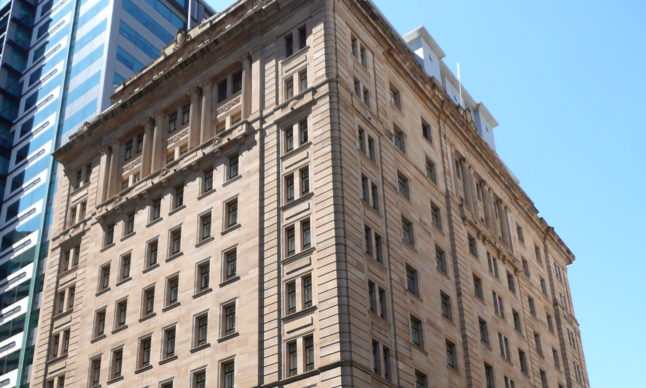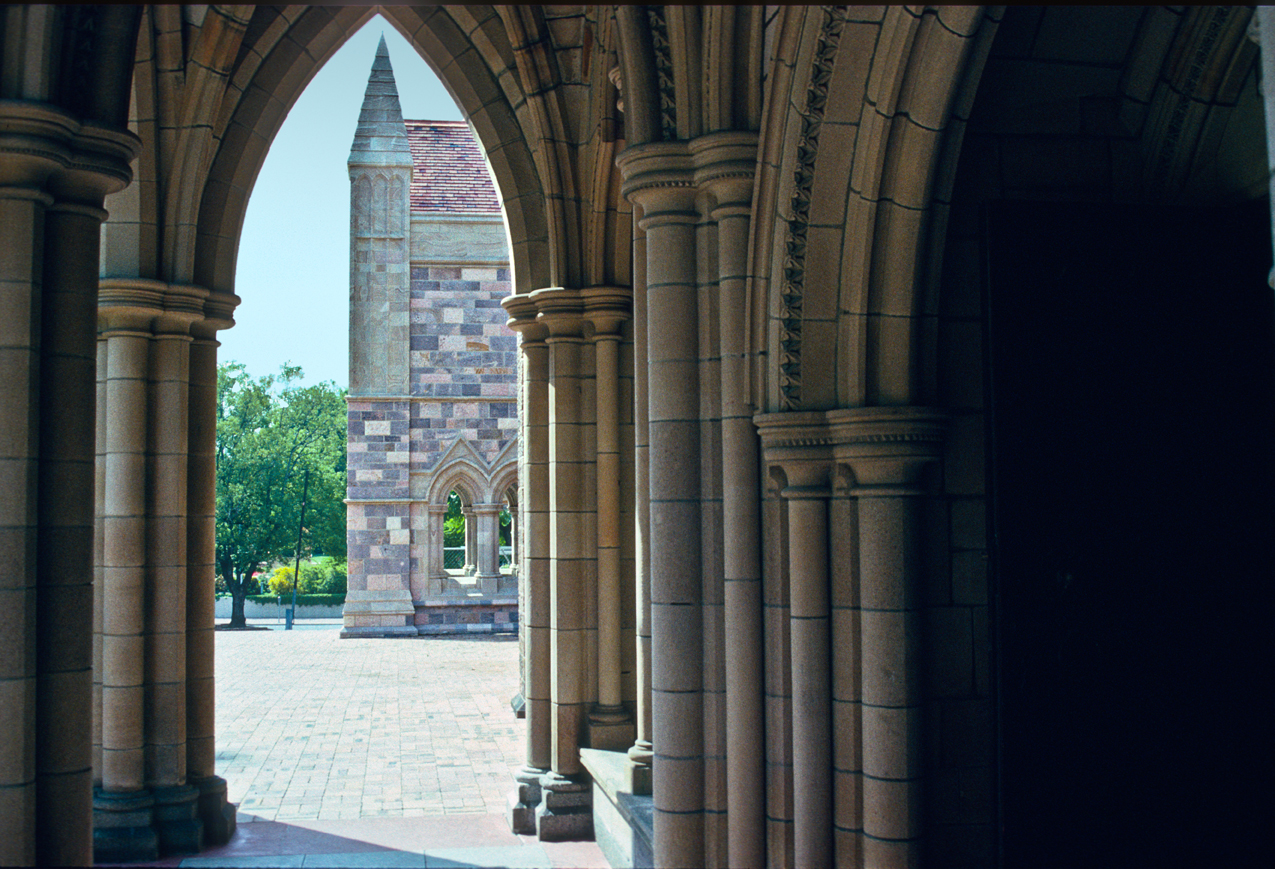Beneath Brisbane’s contemporary skyline lies a quieter story told in stone. Carved from the region’s own geology, sandstone buildings have shaped the architectural identity of Brisbane for more than 150 years. Durable, elegant and inherently local, sandstone has been used in everything from grand government institutions to humble boundary walls — and during Brisbane Open House 2025, visitors can discover some of the city’s most impressive sandstone sites.
Here’s a look at some of the heritage sandstone buildings welcoming visitors this year.
Commissariat Store
Built by convict labour in 1829, the Commissariat Store is Brisbane’s oldest occupied building — and one of the few remaining examples of convict-built architecture in Queensland. Constructed primarily from Brisbane tuff and sandstone quarried from the cliffs of nearby Kangaroo Point, it originally served as a government supply depot.
Today, the building houses the Royal Historical Society of Queensland and offers visitors a rare chance to step inside Brisbane’s early colonial infrastructure.
📍 115 William Street, Brisbane City
Brisbane City Hall
An iconic sandstone landmark, Brisbane City Hall was completed in 1930 and remains one of the city’s most recognisable civic buildings. Its grand façade, with columns and detailing carved from Helidon sandstone, and its soaring clock tower, evoke a sense of pride and permanence.
Inside, the Main Auditorium and its famed copper dome continue to impress visitors, as do the rotating exhibitions in Museum of Brisbane, housed within the building.
📍 64 Adelaide Street, Brisbane City
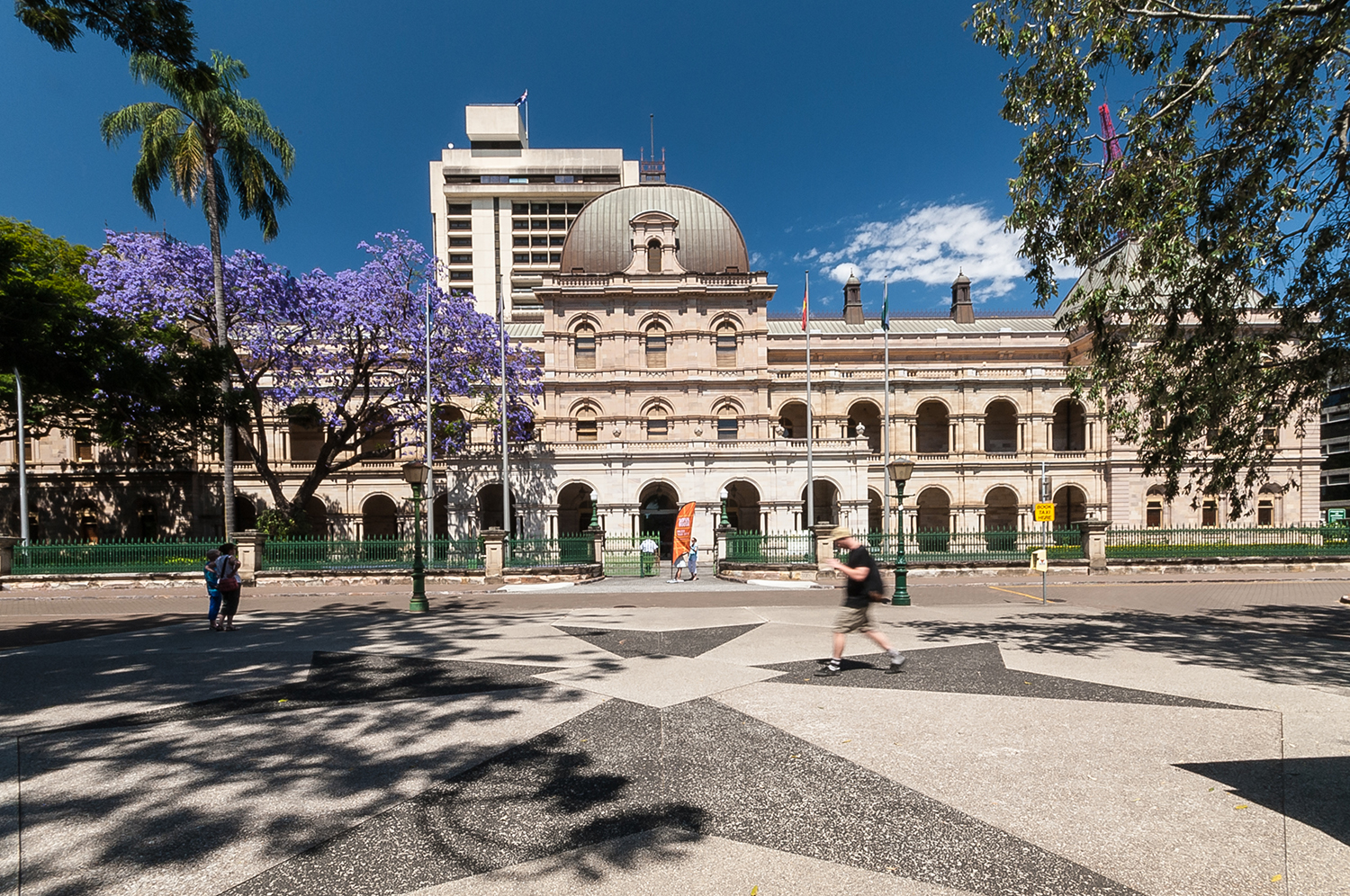
Queensland Parliament House
Completed in 1868, Queensland’s Parliament House is one of the state’s most important sandstone buildings, reflecting French Renaissance Revival style and designed by Colonial Architect Charles Tiffin. Helidon sandstone gives the building its soft, warm colour, and intricate detailing reveals the hand craftsmanship of its era.
Visitors to Parliament during Open House can tour the Legislative Chambers and public galleries, and explore one of the best-preserved civic buildings of its kind in Australia.
📍 George Street, Brisbane City
Masonic Memorial Centre
Located on the crest of Ann Street, the Masonic Memorial Centre is a striking interwar sandstone building, designed in the Classical tradition and completed in 1930. Built as a tribute to Freemasons who served in WWI, the building features an impressive sandstone façade with symbolic architectural elements that reflect the fraternity’s heritage and values.
Visitors can step inside to explore the symbolic interiors, libraries, and collections that make this site both architecturally and culturally significant.
📍 311 Ann Street, Brisbane City
Old Government House
A cornerstone of Queensland’s colonial history, Old Government House is a masterclass in Classical Revival architecture, adapted for the subtropical climate. Completed in the 1860s using Brisbane tuff and sandstone, it served as the official residence of Queensland’s governors until 1910. Now managed by QUT, it operates as a museum and gallery.
📍 QUT Gardens Point Campus, 2 George Street
United Service Club
Built in the 1880s, the United Service Club occupies a grand residence featuring rendered and sandstone detailing, designed in the Victorian Italianate style. Originally constructed as a private home, it has since served a number of public functions before becoming home to the club.
While the site has evolved over time, it retains much of its sandstone charm, with finely detailed façades and heritage interiors that reflect the social and architectural values of its era.
📍 183 Wickham Terrace, Spring Hill
Anzac Square
A peaceful civic space in the heart of Brisbane, Anzac Square features a Shrine of Remembrance constructed from Helidon sandstone. Completed in 1930, the memorial honours Queenslanders who served in the First World War and subsequent conflicts.
Its colonnaded rotunda and sandstone balustrades are surrounded by landscaped lawns and commemorative sculptures—an enduring tribute to sacrifice and service.
📍 Ann Street, Brisbane City
All Saints Anglican Church
Completed in 1869, All Saints is Brisbane’s oldest Anglican church still in use. Built with locally quarried sandstone, its Gothic Revival style and lancet windows evoke a quiet dignity.
This heritage-listed treasure includes a 1930s rectory, timber lychgate, and carved stone baptismal font—each telling part of the story of Brisbane’s ecclesiastical past.
📍 32 Wickham Terrace, Spring Hill
Cathedral and Chapel of St Stephen’s
This cathedral is the spiritual heart of Brisbane’s Catholic community and a remarkable sandstone structure built over several stages from 1863 to 1989. Its Gothic Revival style and sandstone façades are paired with stained glass windows and vaulted interiors. The adjacent 1850s St Stephen’s Chapel (the oldest church in Queensland) is also built from sandstone and forms part of the same sacred precinct.
📍 249 Elizabeth Street, Brisbane City
MacArthur Museum
Formerly the AMP Building, this elegant interwar commercial building was constructed from sandstone and granite in the 1930s. It became General Douglas MacArthur’s South-West Pacific headquarters during WWII, and now houses the MacArthur Museum.
Its classical sandstone columns and façade reflect a time of architectural grandeur and global significance.
📍 201 Edward Street, Brisbane City
St John’s Cathedral
Built in stages from 1906 to 2009, St John’s is one of only a few Gothic Revival cathedrals in the world still constructed from stone using traditional methods. Its magnificent Helidon sandstone was quarried locally, and its intricate carvings and flying buttresses are awe-inspiring.
The result is a building that blends European medieval traditions with Queensland materials and craftsmanship.
📍 373 Ann Street, Brisbane City
Why Sandstone?
More than just a building material, sandstone shaped Brisbane’s identity. Mined from local quarries such as Helidon and Goodna, it was prized for its workability, thermal properties, and natural beauty. Whether in decorative cornices or structural foundations, sandstone told the story of Brisbane’s early ambition.
During Brisbane Open House 2025 (19+20 July), you’ll have the rare chance to discover inside these buildings and discover the stories written in stone.

